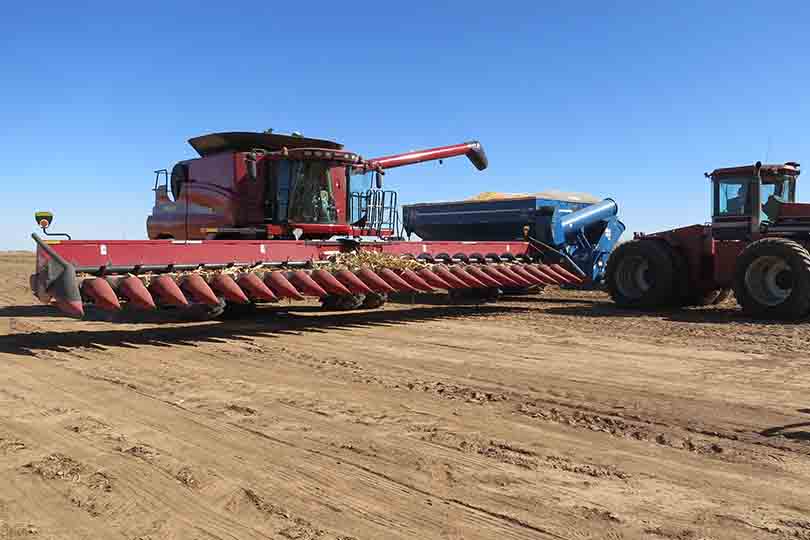Credit problems are increasing due to tighter margins, weather problems in some regions of the country, reductions in the level of farm program payments and a softening of the land market in many areas, according to two agricultural economists. In addition, beef and dairy, which have been bright spots, are also seeing income declines.
Danny Klinefelter, professor and Extension economist at Texas A&M University, and Rodney Jones, associate professor and Extension economist at Oklahoma State University, say U.S. net farm income is expected to be $58.3 billion in 2015, down from $91.1 in 2014 and $123.7 billion in 2013. With increases in operating debt and asset value declines, the debt-to-income ratio for the farm sector is approaching 6-to-1 and anything over 4-to-1 tends to be a leading indicator of credit problems.
Decreases in land values (more than 80 percent of average farm assets), combined with lower revenues and an increase in the amount of operating debt that is carried over, will drive the debt-to-income ratio higher.
The overall solvency position of U.S. farms is strong (low overall debt-to-equity, etc.), and interest rates remain at low levels, but the current farm financial situation is driven by liquidity. An uptick in the number of farm bankruptcies is causing some nervousness in the lending community.
INFLUENCES ON LENDERS
From a lender perspective, monitoring deteriorating liquidity (and profitability) issues can be difficult because too many farmers and lenders are still using cash basis tax accounting measures to assess and monitor business performance. It is widely known that cash accounting measures can lag true management accrual accounting by two years to three years going into a downturn.
Cash measures can look fine for a time, as managers reduce the level of inventory carryover and reduce the level of pre-paids and equipment purchases, while the business is actually losing money.
Overall farm lending risk is also impacted by the fact that many farms have debt levels that exceed FSA’s credit guarantee limit of $1,399,999, eliminating that risk mitigation tool for many situations. Finally, there is the multiplier effect on the farm supply sector, which spreads the negative impact of the downturn in the farm economy to the rest of the lender’s loan portfolios.
In addition, both commercial banks and the Farm Credit system are facing the implementation of Basel III rules. Regulators may require lenders not only to have more capital in general, but for it to be risk based, depending upon the quality of their loan portfolio. An increase in poor quality loans will give lenders less flexibility in dealing with troubled borrowers.
New regulations continue to flow out of the Dodd-Frank Act. Bank and Farm Credit examiners are also becoming aggressively proactive and are requiring stricter standards on underwriting, credit analysis, risk rating and justifying why a troubled borrower’s loan is being extended or modified. The Office of the Comptroller of the Currency for banks and Farm Credit Administration for Farm Credit are expanding this tougher set of examination policies nationwide. All of these factors make the lending process both slower and more costly.
With commodity prices, land and used equipment prices not showing any signs of a near term turn around, lenders will have to be forward-looking, and they will have to become more conservative in deciding how long they can continue financing troubled borrowers. Individual lenders may need to shock-test portfolios at a more extreme level to reflect both potential declines in income levels and asset values.
Increasingly, lenders will likely be asking for interim budget performance reports, i.e., actual versus budgeted performance throughout the year, with an explanation of any plans for corrective action or modifications to the budget for the remainder of the year, if negative variances are occurring. Problem loans will also need to provide evidence of compliance with the terms of loan agreements.
More farms are being required to provide their lender with a more formalized business and succession plan. With the increasing complexity and rate of change in agriculture, the division of responsibilities and strength of the management team become more critical, and lenders ma

